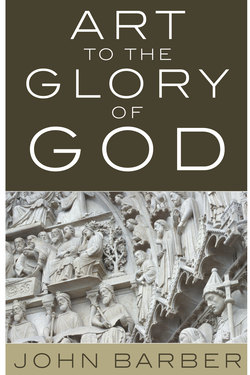Читать книгу Art to the Glory of God - John Barber - Страница 5
Introduction
ОглавлениеYears ago, I was privileged to be a student at the Yale University Institute of Sacred Music. The Institute is an interdisciplinary think-tank that is shared by the Yale Divinity School and the Yale Graduate School of Music. I attended classes in both schools. The principle focus of the Institute is to further study and dialogue on the relationship of Christianity and culture. My role at the Institute also permitted me to take courses at the Department of Christianity and the Arts, where I studied art history (principally painting and architecture) and many of the underlying religious themes found in numerous art masterpieces. During my few years at the Institute, I arrived at many conclusions regarding the relationship between Christianity and culture—all of which have since matured.
One result of my deliberations over this mutual relationship is a book that I wrote titled The Road From Eden: Studies in Christianity and Culture. The book has a great deal to say about many areas of society and culture, art and art history in particular. Though my formal training is in the area of music, I learned many years ago that the best place to discern the imprint of Christianity upon the forms of Western culture is found in the medium of art—painting and architecture, specifically. Frankly, the history of culture is embodied in the history of art. As I have stated many times before, the student that knows little of art history knows little of cultural history.
An unexpected byproduct of The Road from Eden was a desire on my part to think more critically about what makes art great. Knowledge of art history is one thing. But knowledge of how one goes about creating a masterpiece is quite another. Truth be told, I can’t paint or sculpt; even my stick-figures leave something to be desired. Nonetheless, there came a point in my study of Christianity’s contribution to the contrasts, currents, and trends in Western culture that caused me to pause and self-reflect, “Wait a minute. What is it about all of these magnificent creations of art that sets them on a higher plane from lesser examples?” So, my interest in what happened in art history shifted to how art becomes great—the mechanics of art. This is a difficult question, certainly because there are so many different examples from art history to examine. The criteria for what makes a composition “great” has changed from epoch to epoch. But are there not some common ingredients that make great art, great?
Added to my continuing interest is a deeper question. I am a Christian. Consequently, I am ever-mindful of the fact that all that is done on this earthly globe is done before a watching God who appraises all the works of our hands. So, for this writer, the question of great art is inextricably woven into the question of how one does art that glorifies God. Now, it is possible to create something that glorifies God but, according to the critic’s eye, is poorly done. On the other hand, it is feasible to create a piece of art that stands the test of time, but which glorifies man. My purpose in this brief work is to seek a synthesis of the two ideas: to offer some suggestions on how the artist can do great art that glorifies God. Beneath all of this is my enduring quest to see the Christian community become, once more, the source of magnificent, world-shaping art.
It is my earnest hope that the artist reading this booklet, whether an apprentice, or advanced, will find within its pages a true source of encouragement and some insights that can improve his craft.
John Barber, PhD
2010
